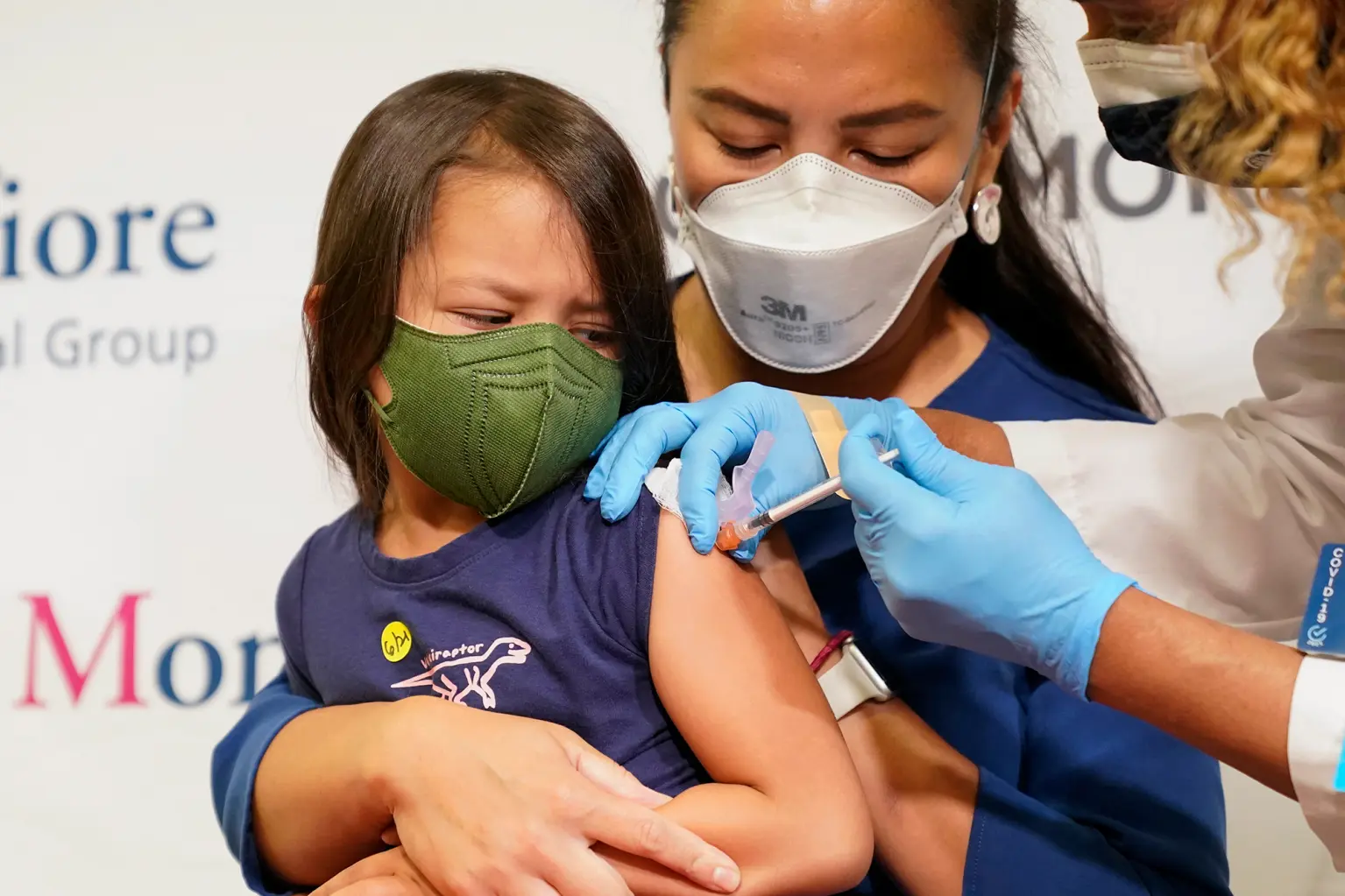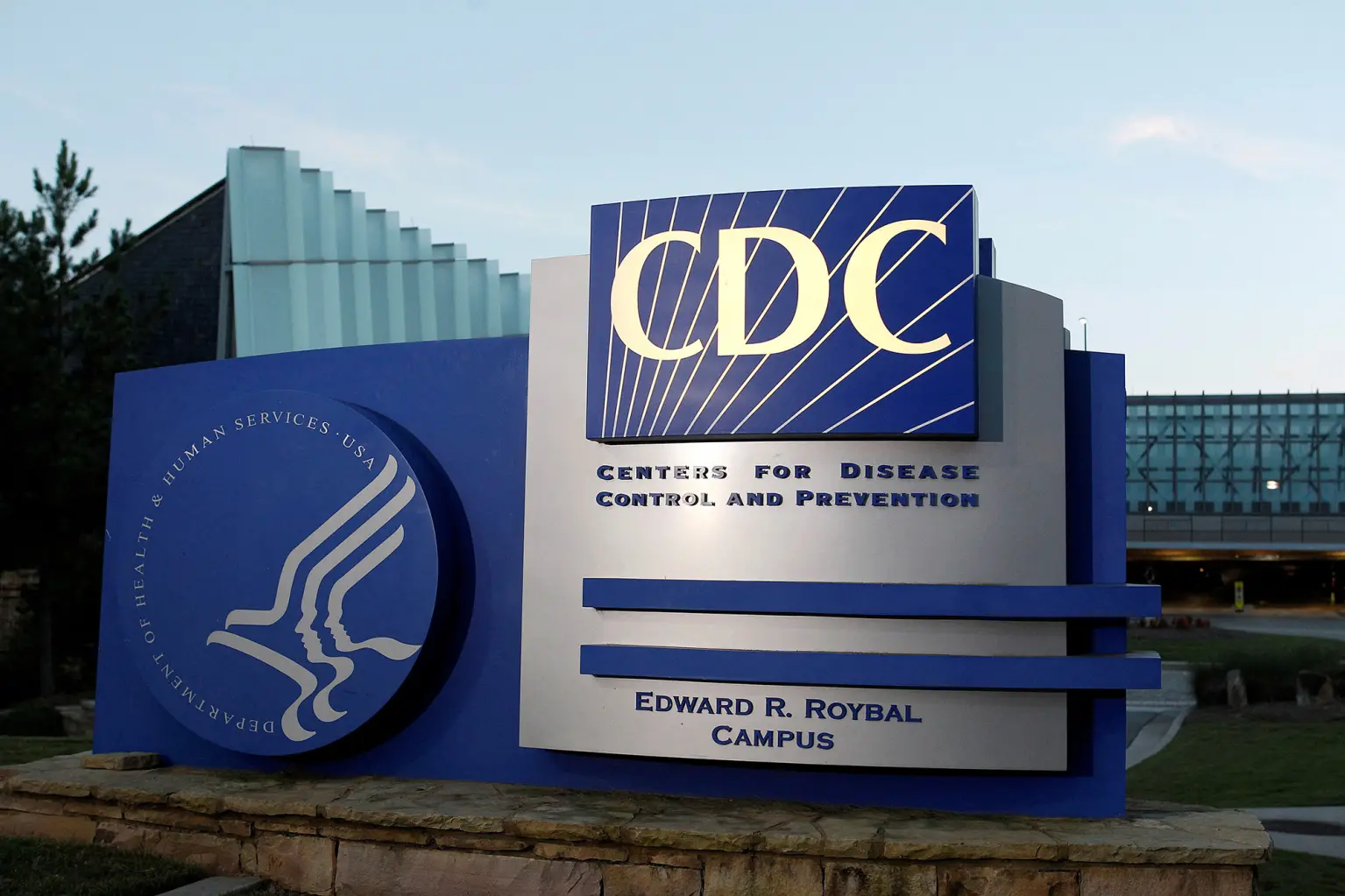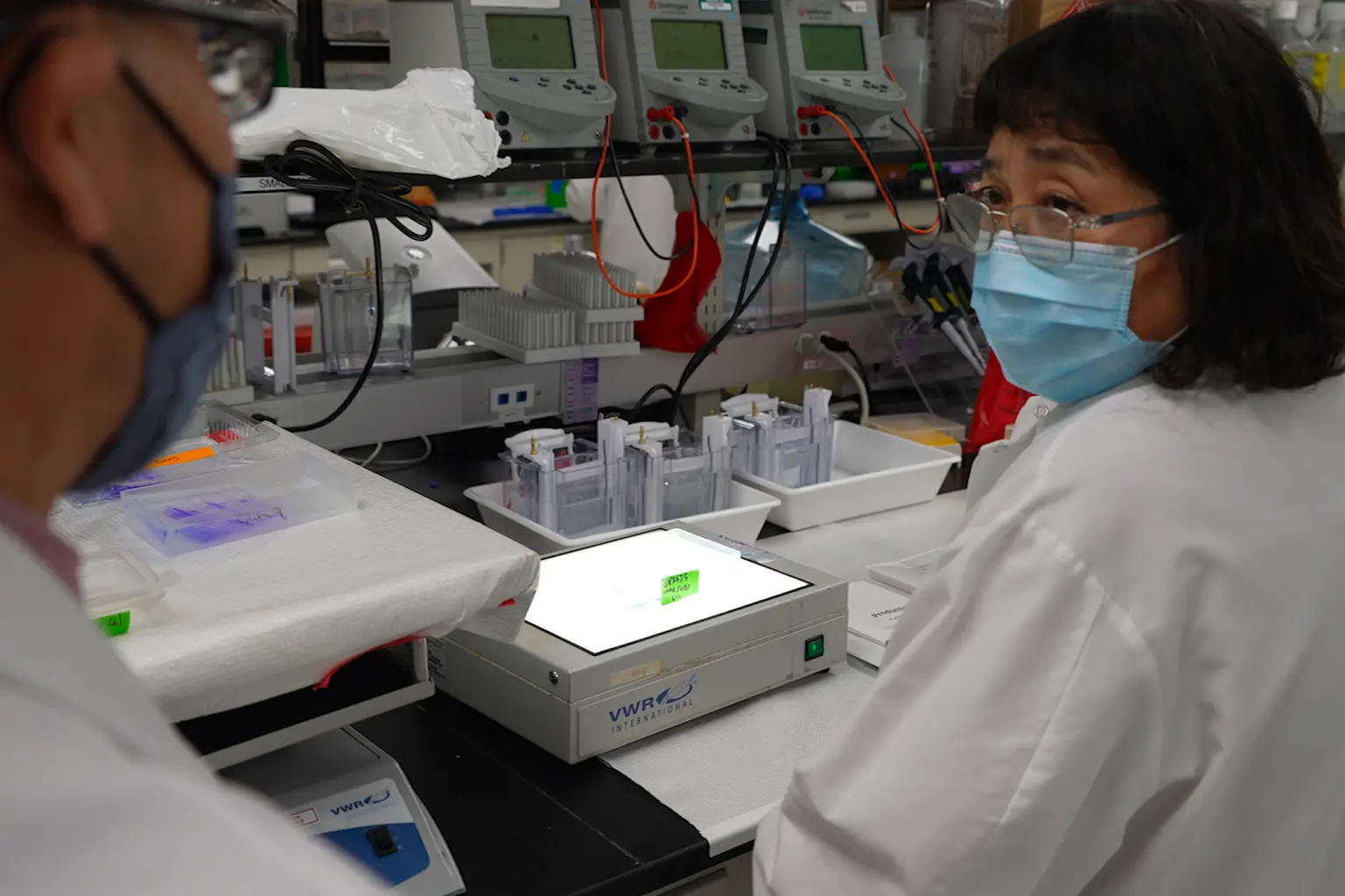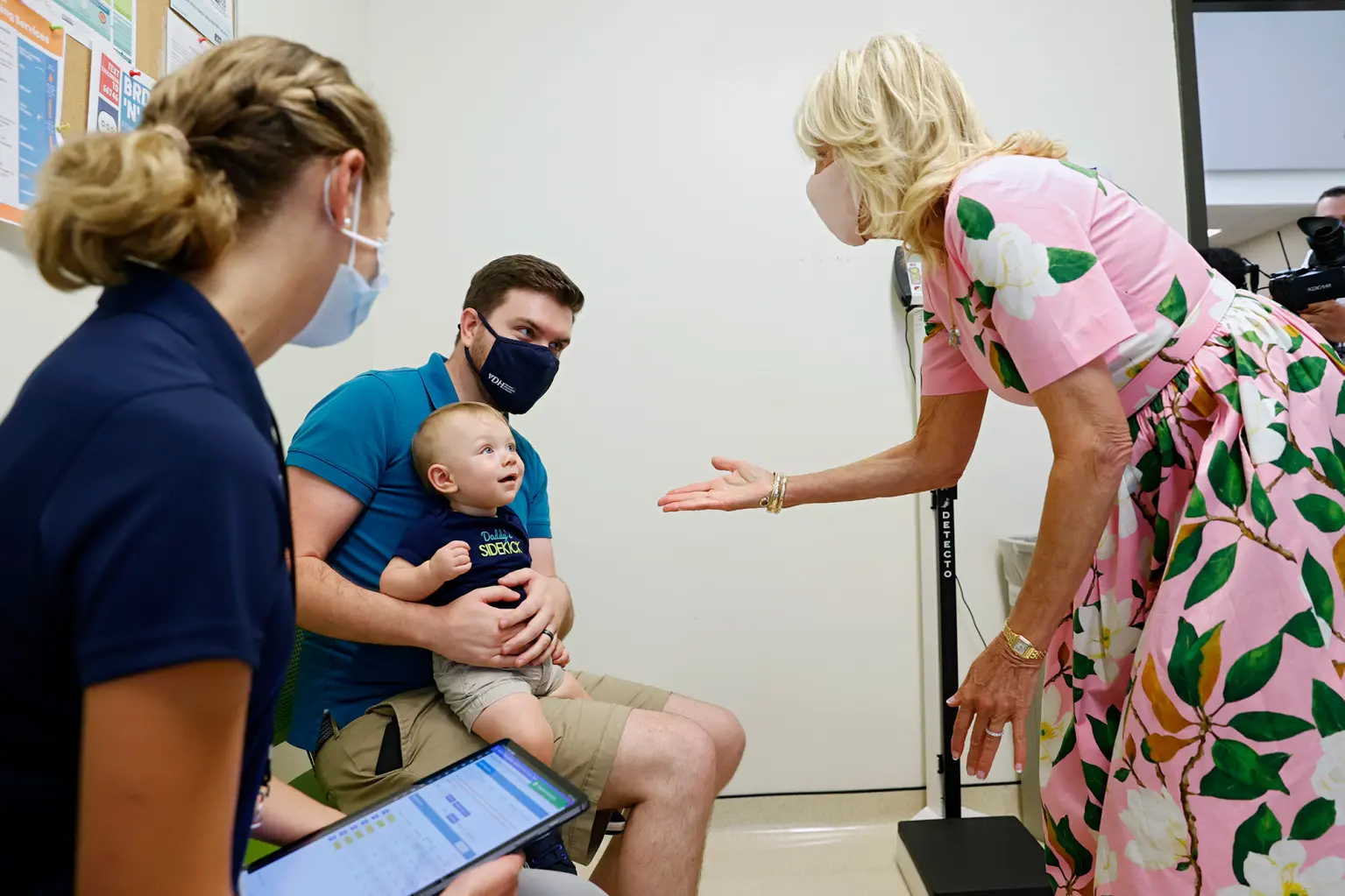The calls and text messages are relentless. On the other end are doctors and scientists at the top levels of the National Institutes for Health, Food and Drug Administration and Centers for Disease Control and Prevention. They are variously frustrated, exasperated and alarmed about the direction of the agencies to which they have devoted their careers.
“It’s like a horror movie I’m being forced to watch and I can’t close my eyes,” one senior FDA official lamented. “People are getting bad advice and we can’t say anything.”
That particular FDA doctor was referring to two recent developments inside the agency. First, how, with no solid clinical data, the agency authorized COVID vaccines for infants and toddlers, including those who already had COVID. And second, the fact that just months before the FDA bypassed its external experts to authorize booster shots for young children.
That doctor is hardly alone.
At the NIH, doctors and scientists complain to us about low morale and lower staffing: The NIH’s Vaccine Research Center has had many of its senior scientists leave over the last year, including the director, deputy director and chief medical officer. “They have no leadership right now. Suddenly there’s an enormous number of jobs opening up at the highest level positions,” one NIH scientist told us. (The people who spoke to us would only agree to be quoted anonymously, citing fear of professional repercussions.)

The CDC has experienced a similar exodus. “There’s been a large amount of turnover. Morale is low,” one high level official at the CDC told us. “Things have become so political, so what are we there for?” Another CDC scientist told us: “I used to be proud to tell people I work at the CDC. Now I’m embarrassed.”
Why are they embarrassed? In short, bad science.
The longer answer: that the heads of their agencies are using weak or flawed data to make critically important public health decisions. That such decisions are being driven by what’s politically palatable to people in Washington or to the Biden administration. And that they have a myopic focus on one virus instead of overall health.
Nowhere has this problem been clearer — or the stakes higher — than on official public-health policy regarding children and COVID.
First, they demanded that young children be masked in schools. On this score, the agencies were wrong. Compelling studies later found schools that masked children had no different rates of transmission. And for social and linguistic development, children need to see the faces of others.

Next came school closures. The agencies were wrong — and catastrophically so. Poor and minority children suffered learning loss with an 11-point drop in math scores alone and a 20% drop in math pass rates. There are dozens of statistics of this kind.
Then they ignored natural immunity. Wrong again. The vast majority of children have already had COVID, but this has made no difference in the blanket mandates for childhood vaccines. And now, by mandating vaccines and boosters for young healthy people, with no strong supporting data, these agencies are only further eroding public trust.
One CDC scientist told us about her shame and frustration about what happened to American children during the pandemic: “CDC failed to balance the risks of COVID with other risks that come from closing schools,” she said. “Learning loss, mental health exacerbations were obvious early on and those worsened as the guidance insisted on keeping schools virtual. CDC guidance worsened racial equity for generations to come. It failed this generation of children.”
An official at the FDA put it this way: “I can’t tell you how many people at the FDA have told me, ‘I don’t like any of this, but I just need to make it to my retirement.’ ”
Right now, internal critics of these agencies are focused on one issue above all: Why did the FDA and the CDC issue strong blanket recommendations for COVID vaccines in children?
Three weeks ago, the CDC vigorously recommended mRNA COVID vaccines for 20 million children under five years of age. Dr. Rochelle Walensky, director of the CDC, declared that the mRNA COVID vaccines should be given to everyone six months or older because they are safe and effective.

The trouble is that this sweeping recommendation was based on extremely weak, inconclusive data provided by Pfizer and Moderna.
Start with Pfizer. Using a three-dose vaccine in 992 children between the ages of six months and 5 years, Pfizer found no statistically significant evidence of vaccine efficacy. In the subgroup of children aged six months to two years, the trial found that the vaccine could result in a 99% lower chance of infection — but that they also could have a 370% increased chance of being infected. In other words, Pfizer reported a range of vaccine efficacy so wide that no conclusion could be inferred. No reputable medical journal would accept such sloppy and incomplete results with such a small sample size. More to the point, these results should have given pause to those who are in charge of public health.
Referring to Pfizer’s vaccine efficacy in healthy young children, one high-level CDC official — whose expertise is in the evaluation of clinical data — joked: “You can inject them with it or squirt it in their face, and you’ll get the same benefit.”
Moderna’s results — it conducted a study on 6,388 children with two doses — were not much better. Against asymptomatic infections, it claimed a very weak vaccine efficacy of just 4% in children aged six months to two years. It also claimed an efficacy of 23% in children between two and six years old, but neither result was statistically significant. Against symptomatic infections, Moderna’s vaccine did show efficacy that was statistically significant, but the efficacy was low: 50% in children aged six months to two years, and 42% in children between two and six years old.
Then there’s the matter of how long a vaccine gives protection. We know from data in adults that it’s generally a matter of months. But we have no such data for young children.
“It seems criminal that we put out the recommendation to give mRNA COVID vaccines to babies without good data. We really don’t know what the risks are yet. So why push it so hard?” a CDC physician added. A high-level FDA official felt the same way: “The public has no idea how bad this data really is. It would not pass muster for any other authorization.”
And yet, the FDA and the CDC pushed it through. That slap in the face of science may explain why only 2% of parents of children under age five have chosen to get the COVID vaccine, and 40% of parents in rural areas say their pediatricians did not recommend the COVID vaccine for their child.

This isn’t the first time that COVID-vaccine recommendations based on scant evidence have been pushed through these agencies.
Most recently, back in May, the lack of clinical evidence for booster shots in young people created a stir at the FDA. The White House promoted it hard even before FDA regulators had seen any data. Once they saw the data, they weren’t impressed. It showed no clear benefit against severe disease for people under 40.
The FDA’s two top vaccine regulators — Dr. Marion Gruber, director of the FDA’s vaccine office, and her deputy director, Dr. Philip Krause — quit the agency last year over political pressure to authorize vaccine boosters in young people. After their departure, they wrote scathing commentaries explaining why the data did not support a broad booster authorization, arguing in The Washington Post that “the push for boosters for everyone could actually prolong the pandemic,” citing concerns that boosting based on an outdated variant could be counterproductive.
“It felt like we were a political tool,” a CDC scientist told us about the issue. That insider went on to explain that he got vaccinated early but chose not to get boosted based on the data. Ironically, that person was unable to go on a trip with a group of parents because proof of being boosted was required. “I asked for someone to show me the data. They said the policy was based on the CDC recommendation.”
As one NIH scientist told us: “There’s a silence, an unwillingness for agency scientists to say anything. Even though they know that some of what’s being said out of the agency is absurd.”
That was a theme we heard over and over again — people felt like they couldn’t speak freely, even internally within their agencies. “You get labeled based on what you say. If you talk about it, you will suffer, I’m convinced,” an FDA staffer told us. Another person at that agency added: “If you speak honestly, you get treated differently.”

And so they remain quiet, speaking to each other in private or in text groups on Signal.
One subject these doctors and scientists feel passionately about but feel they cannot bring up is natural immunity. Why, they wonder, are we insisting on immunizing children who already have some immunity to the disease due to having contracted COVID?
As of February, 75% of children in the US already had natural immunity from prior infection. It could easily be over 90% of children today, given how ubiquitous Omicron has been since then. The CDC’s own research shows that natural immunity is better than vaccinated immunity and a recent New England Journal of Medicine study from Israel has questioned the benefits of vaccinating previously infected persons. Many countries have long credited natural immunity towards vaccine mandates. But not the US.
In this, the leaders of these American health agencies made the US an international outlier in how it treats children. Sweden never offered vaccination to children under 12. Finland limits COVID vaccines to children under 12 who are at high risk. The Norwegian Institute of Public Health has appropriately stated that “some children may benefit” but “previous infection offers as good of protection as the vaccine against reinfection.” Denmark announced on June 22 that its recommendation to vaccinate any children under age 16 was a mistake. “The vaccinations were not predominantly recommended for the child’s sake but to ensure pandemic control,” said Søren Brostrøm, head of the Danish Ministry of Health.
It is statistically impossible for everyone who works inside of our health agencies to have 100% agreement about such a new and knotty subject. The fact that there is no public dissent or debate can only be explained by the fact that they are — or at least feel that they are — being muzzled.

It is an ancient, moral requirement of our profession to speak up when we believe questionable treatments are being proposed. It is also good for the public. Imagine, for example, a world in which those scientists who suggested that masking for children and school lockdowns were worse for public health were not smeared but instead debated?
The official public-health response to COVID has undermined the public’s belief in public health itself. This is a terrible outcome with potentially disastrous consequences. For one thing, because of these sloppy and politicized policies, we run the risk of parents rejecting routine vaccines for their children — ones we know are safe, effective and life-saving.
The leaders of the CDC, the FDA and the NIH should welcome internal discussion — even dissension — based on the evidence. Silencing physicians is not “following the science.” Less absolutism and more humility by the men and women running our public health agencies would go a long way in rebuilding public trust.
Dr. Marty Makary is a professor at the Johns Hopkins School of Medicine, the author of The Price We Pay and a medical advisor to Virginia Gov. Glenn Youngkin. Dr. Tracy Beth Høeg is an epidemiologist affiliated with The Florida Department of Health who has published research on COVID-19 in schools in the CDC’s journal MMWR. From Common Sense.
